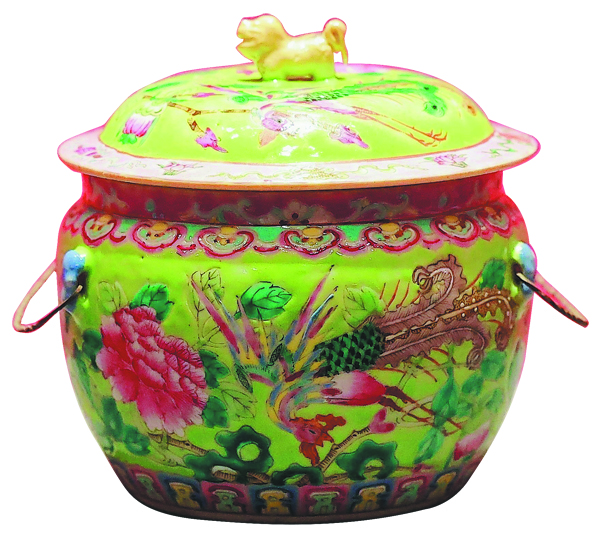

The architecture of the Baba Nyonya community also reflects the unique fusion of Chinese and Malaysian traditions.
In the exhibition area, visitors are greeted with a palette of colors that include white, red and green, each carrying its own significance and cultural heritage. White and red are prominent colors in traditional Chinese Hokkien architecture, symbolizing purity, prosperity and good fortune. Green, on the other hand, is considered an auspicious color in Malaysian culture, representing growth, harmony and balance.
By incorporating these colors into the exhibition space, visitors can connect with the themes of Baba Nyonya culture and deepen their immersion in the world being showcased.
Through the vibrant hues and diverse color palette of Baba Nyonya architecture, visitors are invited to appreciate the diversity and harmonious blend of traditions that define the community's unique identity, according to Museum Headlines.
Xin Lixue, director of the China (Hainan) Museum of The South China Sea, says that the exhibition serves as a bridge for deepening cultural exchanges and fostering mutual understanding between China and Southeast Asia.
"Through the exploration of cultural relics and artifacts, visitors are transported back in time to envision the bustling scene of maritime trade routes, witness the rich legacy of Peranakan traditions and appreciate the harmonious integration of Chinese, Singaporean and Malaysian cultural influences," Xin says.
Clement Onn, deputy director of Curatorial and Research of the Asian Civilisations Museum in Singapore, highlights the Peranakan's deep-rooted connections to both Chinese traditions and the diverse local communities of Southeast Asia.
"They have not only preserved the customs and practices of their Chinese ancestors but also actively engaged with and assimilated into the multicultural fabric of the regions where they settled, resulting in a vibrant fusion of cultures that is uniquely their own," Onn says.